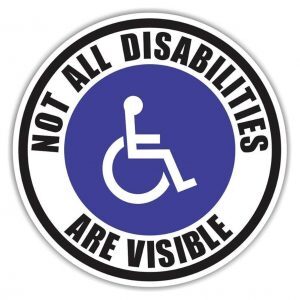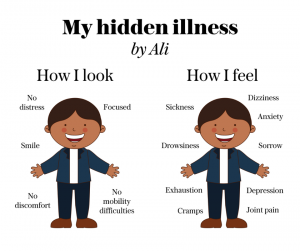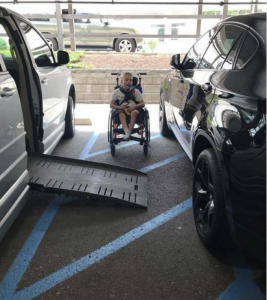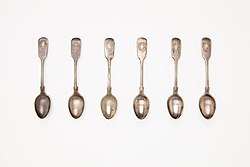Not all disabilities are visible

I think we’ve probably all heard the terms invisible illnesses and hidden disabilities. Yes? But if you don’t have one yourself, I wouldn’t blame you if you didn’t think about it very often. I didn’t either until I was diagnosed with one that affected my mobility. This post is to raise awareness and offer resources.
An invisible illness is any physical, mental, or neurological condition that limits or challenges a person’s life but is not immediately apparent to others.
People with invisible illnesses often appear healthy, even when they are experiencing severe chronic pain, extreme fatigue, cognitive difficulties, or other debilitating symptoms that significantly impact their daily lives.

Click here to read “But you don’t look sick!” and to view a larger, clearer image.
Types of invisible illnessesThere are way too many types of invisible illnesses to list them all. A few that affect people I know personally are diabetes, autism, Crohn’s disease, POTS, kidney disease, multiple sclerosis, fibromyalgia, long COVID, and several forms of cancer. Some of these conditions start out invisible and become more apparent as they progress.
Many invisible illnesses affect mobility, but not always to the extent that an extremely visible wheelchair (or other mobility aid) is required. Most involve chronic pain and fatigue.
Multiple conditionsI hate the term comorbidities. It sounds so…well, morbid! And it wasn’t until COVID, when the term was used a lot to identify high-risk individuals, that I realized I have several of them. I’m not going to list all of mine, but when you look at me what do you see? I’m fat, I’m older, and I’m a woman. This is not a recipe for being taken seriously in society or by medical professionals. If you don’t agree with me, you’re probably not a fat, older woman!
When invisible isn’t exactly invisibleOMG, I wasn’t planning to elaborate, but I just saw this video (2:35 min.) and had to include it: Katie Couric interviews Dr. Mary Claire Haver on how being told to look out for “Whiny Women” shaped her career.
Obese people are obviously, visibly, fat. It’s easy to assume they are just lazy and eat too much food. But they can also have multiple other things going on with them that are “invisible”. They can have illnesses (or medications) that contribute to their obesity, and they can have illnesses in addition to being obese.
Fat can be classified in several different ways. For purposes of this post, I have TWO types of visible fat. One type is responsive to diet and exercise, but the other one is not. The fat disease I have — besides obesity — is called lipedema. If you’ve never heard of it, well, neither had I until a year or so ago. If I’d known about it, I could have asked about it by name and shortened the diagnostic period from several years to several weeks (or months, considering how challenging it is to get an appointment around here). I did point out my symptoms to every doctor I saw — heavy legs that were painful to the touch and seemed out of proportion to the rest of my albeit fat body — resulting in a few helpful half-measures, but not quite on the mark when it came to a diagnosis. There is no cure for lipedema, but I always think it’s better to know what’s wrong than to wonder. I’ve learned that there are many things I can do to manage it, and if don’t do all the things, it will get worse over time. And “managing” it doesn’t mean I can do everything I used to do.
Lipedema and lymphedemaLipedema is not rare, but it affects almost exclusively women and is extremely misunderstood and under-diagnosed. (As are many “women’s” diseases.) Since I don’t see lipedema on most lists of invisible illnesses, I asked Google about it.
AI Overview:
Yes, lipedema can be considered an invisible illness, despite its visible physical symptoms. While lipedema causes a disproportionate buildup of fat that can be seen, the underlying disease and the chronic, debilitating pain and fatigue that accompany it are often not understood or acknowledged by others, including medical professionals.
Many lip-edema patients (including myself) also have lymph-edema to one extent or another, or they are in danger of developing it. Everyone looks and feels different in the various stages and types of lipedema. Charts depicting the stages and types of lipedema also differ from each other, which is why I’m not including one here. If you see one, I’m not the worst case, but neither am I the best case. Some individuals have benefitted from surgery (a non-cosmetic form of liposuction), but it’s not a cure, and they still have to do all the things to manage it afterwards or it will return.
This post is not all about me, though, and is not meant as a lipedema tutorial, either. So allow me to leave you with some resources where you can learn more about it:
Printable PDF: “10 Things to Understand about Lipedema” is a good 4-page infographic of the basics.
Websites: The best sources for lipedema information are organizations like the Lipedema Foundation, The Lipedema Project, and Lipedema.com.
Social Media: Type the word “lipedema” into the search box on any social media platform to find lots of resources, different types of support groups, and individuals posting about it.

This is why you don’t park in the striped area of a handicap zone.
Mobility (or lack thereof) awarenessOne of the easiest ways of identifying someone with a disability is if they are in a wheelchair or using another mobility aid such as crutches or a rollator. These would be considered visible illnesses or conditions. As a result of mobility difficulties related to lipedema, I have, in my possession, a doctor-prescribed handicap parking placard. But I am not using mobility aids (except when I twisted my knee and used crutches for a while).
Do I use the placard? Yes, sometimes I do. Not always, though.
Whenever I drive somewhere there is a calculation involved:
Is there a parking lot where I’m going? (Or is it street parking, and how far down the street are we talking about?)Is there an open handicap parking spot available? (Often there aren’t enough.)How far from the front door is it? (Sometimes the spots are quite far from the front door. It’s like someone decided no one needs a handicap spot unless they have a wheelchair, and the wheelchair ramp is sometimes at the end of the building, quite far from the front door.)Are there regular spots available closer (or equally close) to the front door? (In which case I would choose one of those, so as to leave the handicap spot free for someone else.)To what degree am I feeling the need to park close to the front door today? (Some days are better than others.)I can’t say anyone’s ever given me a hard time for using a handicap parking spot, but I know others who have been given a hard time, and I always worry that someone will.

What is it? Here’s the Wikipedia definition:
Spoon theory is a metaphor describing the amount of physical or mental energy that a person has available for daily activities and tasks, and how it can become limited.
A lot of Spoon Theory articles and infographics pertain to neurodivergence. But that just means it applies to them as well as to those with other invisible illnesses. If you click here you are likely to find infographics and articles that pertains to your specific condition.
This isn’t about which diseases are “worse” than others. Even if two people have the same disease, their experience of it can be different in as many ways as they are similar.
I don’t personally use The Spoon Theory, but I think that’s mostly because I don’t have to explain myself very often to others. (“Sorry, I can’t accept your last-minute invitation; I’m down to my last spoon and that would take at least three.”)

Some invisible illnesses are temporary, and others are chronic. I once wrote a post called Organizing to De-Stress a Major or Chronic Illness. It was intended for both those who are ill, and for those who live with or care for them.
I’ve updated it a few times over the years, the last time being in 2019. Which, ironically, is around the time I was seeking my own diagnosis and not finding answers. So there may be a few outdated resources, but the major sub-topics are still good:
Organize Your Medical RecordsOrganize Your Support SystemOrganize Your HomeOrganize Your Self Hidden Disabilities Sunflower Program
Hidden Disabilities Sunflower ProgramThe Hidden Disabilities Sunflower lanyard, cards, and pins are simple tools for voluntarily sharing that you have a disability or condition that may not be immediately apparent. The program also provides ways for public places and services to indicate that they are aware and available to help you.
Although they feature a number of disabilities on this page, the site also has an index of 912 (!!!) hidden disabilities on this page (scroll down past the form). I was just about to submit “lipedema” when I realized they DO have both lipedema and lymphedema listed under their British and Australian spellings — lipoedema and lymphoedema.
I don’t know how well this worldwide program is catching on, partly because I don’t get out much these days. But I do know the Regional Director in Canada, Clare Kumar. (I already knew about the program before she started talking about it.) She has a Facebook group called Happy Space Pod, and a podcast called Happy Space Podcast. Check them out!
 Invisible illness awareness
Invisible illness awarenessWhat can you do to help? Well, for starters:
Remember: Be kind, for everyone you meet is fighting a battle you know nothing about. Share this post with others.For more info, Google “invisible illness awareness”. If you see someone wearing a sunflower lanyard or pin, be patient with them if nothing else. (Surely there are people who will wear sunflowers without ever knowing this program exists, because they are pretty. Eh — might as well be kind to them, too!)Keep in mind that the Hidden Disabilities Sunflower program estimates that 1 in 6 people has an invisible illness. That’s a lot of people!Do you, or someone you know, have an invisible illness?
If so, do you have any advice for the rest of us?
Please share in the comments below!
______________________________________________________Hazel Thornton is an author, genealogist, and retired home and office organizer.Book: Hung Jury: The Diary of a Menendez Juror Book: What’s a Photo Without the Story? How to Create Your Family Legacy Book: Go With the Flow! The Clutter Flow Chart Workbook Feel free to link directly to this post! Click here to ask about other uses.Copyright 2025 by Hazel Thornton, Organized for Life and Beyond_____________________________________________________________________________
The post Not all disabilities are visible appeared first on Hazel Thornton.



